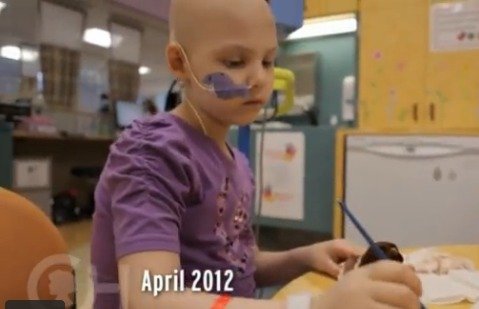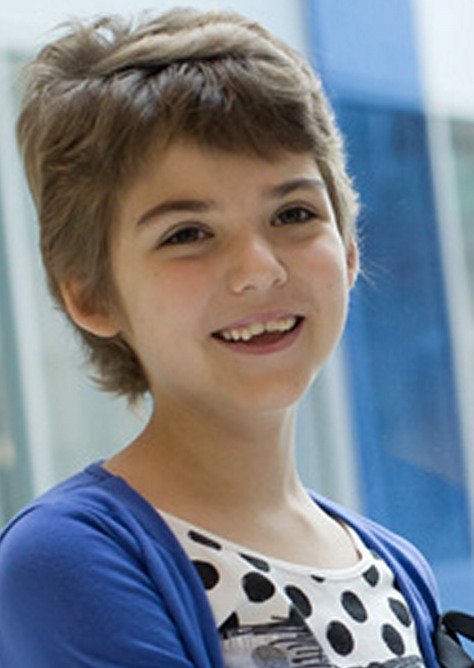The Market Ticker
I’m done being nice.
And I’m doubly-done with the damned leftists in this country performing the moral equivalent ofritual human sacrifice of children to advance their gun-control agenda.
That’s what I charge they’re doing.
And I’m going to back it up with mathematics, using just one of the common psychotropic medications used commonly today — Paxil.
This is from the prescribing information for Paxil:
Clinical Worsening and Suicide Risk:
Patients with major depressive disorder (MDD), both adult and pediatric, may experience worsening of their depression and/or the emergence of suicidal ideation and behavior (suicidality) or unusual changes in behavior, whether or not they are taking antidepressant medications, and this risk may persist until significant remission occurs. Suicide is a known risk of depression and certain other psychiatricdisorders, and these disorders themselves are the strongest predictors of suicide. There has been a long-standing concern, however, that antidepressants may have a role in inducing worsening of depressionand the emergence of suicidality in certain patients during the early phases of treatment. Pooled analyses of short-term placebo-controlledtrials of antidepressant drugs (SSRIs and others) showed that these drugs increase the risk of suicidal thinking and behavior (suicidality) in children, adolescents, and young adults (ages 18-24) with majordepressive disorder (MDD) and other psychiatric disorders. Short-term studies did not show an increase in the risk of suicidality with antidepressants compared to placebo in adults beyond age 24; there was a reduction with antidepressants compared to placebo in adults aged 65 and older.
That’s a problem. What’s worse is this:
The following symptoms, anxiety, agitation, panic attacks, insomnia, irritability, hostility, aggressiveness, impulsivity, akathisia (psychomotor restlessness), hypomania, and mania, have been reported in adult and pediatric patients being treated with antidepressants for majordepressive disorder as well as for other indications, both psychiatric and nonpsychiatric. Although a causal link between the emergence of such symptoms and either the worsening of depression and/or the emergence of suicidal impulses has not been established, there is concern that such symptoms may represent precursors to emerging suicidality.
And it doesn’t end there:
Screening Patients for Bipolar Disorder
A major depressive episode may be the initial presentation of bipolar disorder. It is generally believed (though not established in controlledtrials) that treating such an episode with an antidepressant alone may increase the likelihood of precipitation of a mixed/manic episode in patients at risk for bipolar disorder.
Now let’s be frank: Mixed manic states are mental states during which all sorts of really ugly things happen, including panic attacks, agitation, impulsiveness, paranoia and rage — all at extreme levels.
In other words, if you miss someone being bipolar and give them this drug you may precipitate a full-on Hulk-style “rage monster” sort of attack!
How often does something like this happen?
Activation of Mania/Hypomania:
During premarketing testing, hypomania or mania occurred in approximately 1.0% of unipolar patients treated with PAXIL compared to 1.1% of active-control and 0.3% of placebo-treated unipolar patients. In a subset of patients classified as bipolar, the rate of manic episodes was 2.2% for PAXIL and 11.6% for the combined active-control groups. As with all drugs effective in the treatment of major depressive disorder, PAXIL should be used cautiously in patients with a history of mania.
So if you miss a bi-polar person in your “analysis” before prescribing, it’s more than doubly-likely that they will have a “rage-monster” episode than if not.
So let’s assume we’re not talking about bi-polar people — that is, let’s make the assumption that we properly screen for each person and perfectly identify all bi-polar people before we prescribe.
What is the expected number of people who will undergo some sort of manic episode, which includes the subset that will turn into rage-monsters and shoot up schools, movie theaters and other public places?
Answer: About 0.7% more that can be charged to the drug (the risk if you do nothing is 0.3%.)
Other similar drugs have similar risk profiles; Paxil is not particularly-remarkable in this regard.
I note, and you should note, that 0.7% is a pretty low risk! That is, 993 people out of 1000 can get a perfectly good outcome from the drug (or at least no harm) but that other 7 in 1000 have an outcome ranging from bad to catastrophically-bad.
Now let’s assume for the sake of argument that we are 99% effective in physician monitoring of these patients. That is, we’re able to somehow confirm that they take the drug exactly as prescribed (no more or less), and we have enough time and physician resources to evaluate them on a regular and continuing basis. This, incidentally, is a fantasy-land level of performance; no profession could possibly meet that standard of care, but we’ll use it to make the point.
But this level of performance, which we can never meet, would provide that of the rage monsters we potentially create with these drugs we catch 99% of them before the episode escalates into something “bad.”
That’s 1% of 0.7%, incidentally, or 0.007% of the total users who (1) have the bad reaction and then (2) we fail to detect via monitoring. In other words, those are the people who shoot up the schools, movie theaters and US Representatives.
The last figures I have are that in 2005 27 million people in the United States, or close to 1 in 10 of all persons, are on some sort of antidepressant carrying these risks.
So if 0.7% of 27 million people have a manic episode caused by these drugs – that is, under perfect conditions where we catch every single bipolar individual first and never prescribe to any of them we will have 189,000 persons in a year who have a manic reaction to these drugs.
That’s horrifying.
But what’s worse is that if we assume 99% effective surveillance by the medicalprofession — that is, 99% of the time the doctor intercepts the person with themanic episode and modifies or terminates their use of the drug before something bad happens….
WE CREATE AND THEN FAIL TO DETECT, WITH NEARLY PERFECT PERFORMANCE (that we will never achieve) 1,890 RAGE MONSTERS EVERY YEAR WHO ARE MENTALLY CAPABLE OF COMMITTING A MASS HOMICIDE.
We’re surprised that there are a few of these a year, when we create more than 5 of them each and every day with near-perfect performance — and likely several times that many given the real-world monitoring that can actually be achieved?
We create these Zombies.
We prescribe the drugs to them.
We do this knowing that the risk exists and that at least one subset of that risk is materially higher for those under the age of 25 who are consuming these drugs.
In point of fact, most of the rage monsters who have committed these crimes are under the age of 25 and either using or having recently terminated the use of these drugs.
Again I reproduce the information directly from the maker of Paxil:
There has been a long-standing concern, however, that antidepressants may have a role in inducing worsening of depressionand the emergence of suicidality in certain patients during the early phases of treatment. Pooled analyses of short-term placebo-controlledtrials of antidepressant drugs (SSRIs and others) showed that these drugs increase the risk of suicidal thinking and behavior (suicidality) in children, adolescents, and young adults (ages 18-24) with majordepressive disorder (MDD) and other psychiatric disorders. Short-term studies did notshow an increase in the risk of suicidality with antidepressants compared to placebo in adults beyond age 24;
Something changes around the age of 24 with these drugs and their interaction with the human mind. We don’t know exactly what it is, but we know that it happens. We also know that these substances have a low but present risk of inducing mania, including rage.
Utterly nobody is bringing this element to the table in debate, but we must, as the rise of these incidents isdirectly correlated to the gross increase in the number of people, including most-especially young people, taking these drugs. The number of users doubled from 1996 – 2005.
If you want to address a problem you must look at the data and follow it where it leads.
Where it leads is into a horrifying mess of prescription psychotropic drug use among our youth and the rare but catastrophic side effects they sometimes produce.
I have friends who have versions of the problem in their families among older individuals; members of the family who doctor-shop for prescription on top of prescription and are mentally questionable to start with. We’re supposed to have some sort of reasonable check and balance on this and indeed Florida claims to have clamped down on the “pill mills” but I can tell you right now that this is utter and complete crap. There is nothing preventing people from going to 10 different doctors until they find three or four that will write scripts and then abusing the drugs — and when they run out “early” calling up for a refill — and getting it. It happens every damned day and if other family members try to intervene, including getting the physicians or the law involved (prescription fraud is supposed to be illegal!) they’re blown off!
It’s true that most of the crazy people in the world aren’t violent, and that being crazy, standing alone, is perfectly legal. It’s also true that nearly all of the people who take these drugs won’t become violent — that’s a side effect that only bites a small percentage of the people who take the drug.
But the risk of turning people into rage monsters and suicidal maniacs appears to be mostly confined to those under the age of 24 according to the drug companies own information and this information is strongly correlated with the actual real-world data on these incidents.
We must have a discussion about this as a society. We might decide that out of the 27 million or more Americans taking these drugs that enough get benefit that we are willing to accept the occasional school or movie theater shooting gallery as the price of prescribing these drugs to those under the age of 24.
If so then we need to be honest about the trade-off we have made as a society and shut the hell up instead of dancing in the blood of dead children to score political points and destroy The Constitution.
But if not, and you can count my vote among the “No” votes in this regard, then we must ban these substances from those under the age of 24 until we understand what’s different among that age group that alters the risk unless and except those persons are under continual professional supervision such as inpatient hospitalization.
Yeah, I understand this will cut into the profits of the big drug companies and thus is “unacceptable” to many political folks, not to mention that the media won’t even talk about the subject due to the advertising they run on their networks on a daily basis for this drug or that.
But unless we want to keep burying kids we had damned well better have that debate.
Mr. Biden, Mr. Obama and the rest on both the left and right who are refusing to go where the data leads are all practicing the moral equivalent of ritual child sacrifice, fueling the pyre under the bodies of our kids with the Bill of Rights.
Stand up America and say in a loud voice: ENOUGH!





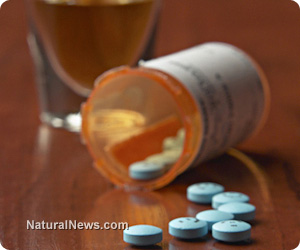 The list of antidepressants that can cause sudden death is growing exponentially, with citalopram - under the brand names Celexa and Cipramil - the latest such drug to be added, according to a new study.
The list of antidepressants that can cause sudden death is growing exponentially, with citalopram - under the brand names Celexa and Cipramil - the latest such drug to be added, according to a new study.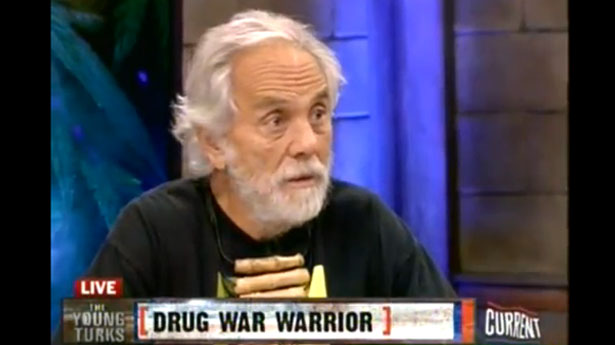

 Mark LeDoux, chairman and CEO, Natural AlternativesInternational: The first obvious issue that arises from this report is that the “healthcare” system in America is a misnomer. We don’t provide healthcare, we provide sick care. Many of the commondiseases that lead to our mortality rates being high are directly linked to what we affectionately call “high-risk behaviors.”
Mark LeDoux, chairman and CEO, Natural AlternativesInternational: The first obvious issue that arises from this report is that the “healthcare” system in America is a misnomer. We don’t provide healthcare, we provide sick care. Many of the commondiseases that lead to our mortality rates being high are directly linked to what we affectionately call “high-risk behaviors.” Steve Mister, president and CEO, Council for Responsible Nutrition: This report is certainly troubling. At the same time, maybe it illuminates some opportunities for potential growth in the U.S. supplement marketplace. As the researchers noted, it’s not any one factor, but rather a whole collection of health-related behaviors that contributes to the U.S.’s health score.
Steve Mister, president and CEO, Council for Responsible Nutrition: This report is certainly troubling. At the same time, maybe it illuminates some opportunities for potential growth in the U.S. supplement marketplace. As the researchers noted, it’s not any one factor, but rather a whole collection of health-related behaviors that contributes to the U.S.’s health score. Robert Craven, CEO, Food State (MegaFood): Like Mark, I am convinced that new legislation will do very little – although I was in favor of the super-size soft drink ban in NYC. I got into a Facebook fight on this one as some of my friends started saying that this was taking away “freedom” and “liberty” and I made the point that if your liberty and freedom starts costing me money it ceases to be your freedom. But I digress.
Robert Craven, CEO, Food State (MegaFood): Like Mark, I am convinced that new legislation will do very little – although I was in favor of the super-size soft drink ban in NYC. I got into a Facebook fight on this one as some of my friends started saying that this was taking away “freedom” and “liberty” and I made the point that if your liberty and freedom starts costing me money it ceases to be your freedom. But I digress.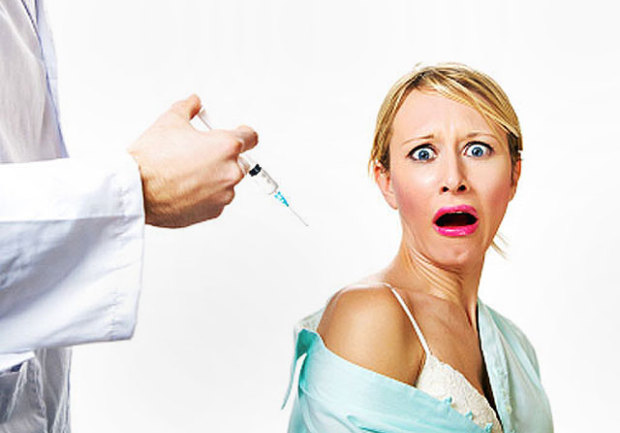 They called it the Spanish Flu pandemic. Pandemic means an epidemic, which spreads over a wide area. It was incorrectly named because World War I was going on and the governments on both side had censorship of the news. Spain was not at war and their newspapers reported the latest information on the pandemic as it was occurring.
They called it the Spanish Flu pandemic. Pandemic means an epidemic, which spreads over a wide area. It was incorrectly named because World War I was going on and the governments on both side had censorship of the news. Spain was not at war and their newspapers reported the latest information on the pandemic as it was occurring. Brominated vegetable oil, a synthetic chemical that has been patented in Europe as a flame retardant, will no longer double as an ingredient in Gatorade sports drinks.
Brominated vegetable oil, a synthetic chemical that has been patented in Europe as a flame retardant, will no longer double as an ingredient in Gatorade sports drinks.